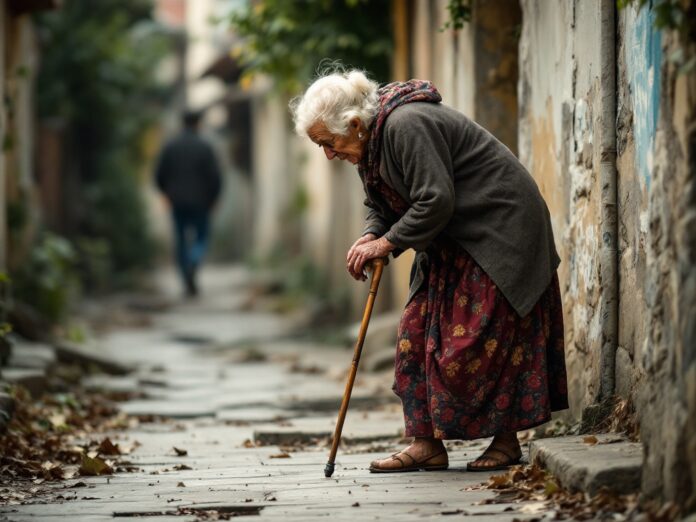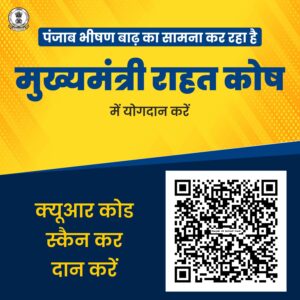Walking down the road, many of us have often come across some elderly woman walking with a limp and some effort, sometimes using a walker or a stick. This so common a sight that people don’t even talk about it. These elderly women suffer in silence, ending in isolation and a total neglect.
Osteoporosis, also known as “chalk bones” disease, is a stealthy illness that starts after menopause due to falling oestrogen levels and silently drains calcium out of bones to an extent they become porous like a chalk and start breaking. Unless diagnosed early, even a small stumble, a cough, or just getting up fractures the bone. Because of abdominal weight spinal discs crush into each other and produce a tilt in the stature and a characteristic limp that becomes a new normal for remaining days of their lives. In India it hits early among women past middle age and without their knowing it.
World Menopause Day was observed last week countrywide followed by World Osteoporosis Day on 29 October and the health agencies tried to launched campaigns about a misery that can be eminently prevented by spreading awareness about it. And almost nothing can be done after bones start crushing just by the body weight.
Osteoporosis in India remains a largely invisible crisis. Various hospital and population-based studies suggest that between one in six postmenopausal women show clear signs of bone loss. Remaining discover it only after a low-impact fall causing a fracture. Hip fractures are rising sharply with India’s ageing population, and doctors report that nearly three out of four such patients had no prior diagnosis of weak bones. Even after treatment for a broken bone, most never get bone-density testing or long-term medication. This ignorance is almost alarming in a country aiming to perform on all developmental indices.
The consequences are heavy. Hip and spinal fractures bring lasting disability, and one in five elderly hip fracture patients in India dies within a year. Those who survive often lose their independence, relying on canes, walkers or family members. Mostly end up as mere destitute.
Consider an elderly woman who bends to pick up a bucket and feels a sudden snap in her back – a spinal compression fracture that leaves her with stoop and limp for a;; coming days. Or another who slips on a wet floor, breaks her hip, and never regains her old stride even after surgery. Many like them believe they are merely “getting old,” unaware that an invisible disease has hollowed out their bones.
Can Ayurveda Help?
Ayurveda regards bones as “asthi dhatu” and links their weakness to vata imbalance. Its therapies focus on strengthening through herbs, mineral preparations and nourishing diets rich in calcium and natural oils. Classical formulations such as Laksha guggulu, praval pishti, and ashwagandha are widely used. Some small Indian studies suggest improvement in pain and minor gains in bone density with such regimens, though large-scale scientific confirmation is still limited.
When used under trained supervision, Ayurveda can complement modern care by improving mobility, reducing pain, and enhancing general wellbeing. But it should not replace medically proven treatments like calcium and vitamin D supplementation, bisphosphonate drugs, and targeted physiotherapy. The best approach blends both systems – medical monitoring for bone strength, and traditional methods for nutrition and muscle recovery.
According to Ayurveda, osteoporosis is primarily associated with the vitiation of Vata dosha, which weakens bone strength and reduces bone density. This classical understanding remarkably parallels modern scientific insights, which link osteoporosis to bone demineralization and age-related hormonal changes that compromise bone health.
Prof. Rabinarayan Acharya, Director General, CCRAS, notes, “Osteoporosis is a growing public health challenge, but one that can be effectively addressed through the preventive and restorative wisdom of Ayurveda. The classical concept of Asthi Saushirya aligns closely with modern understanding of bone fragility. Ayurveda’s emphasis on early intervention, balanced diet, and conducive lifestyle provides a natural path toward stronger bones and healthier aging.” He further added that the Central Council for Research in Ayurvedic Sciences (CCRAS) has undertaken scientific studies to validate Ayurvedic formulations such as Laksha Guggulu and Pravala Pishti in the management of osteoporosis, and to generate robust evidence on the role of Ayurvedic interventions in musculoskeletal disorders.
What Happens When Bones Become Brittle
Bones are not static; they are living tissue that constantly breaks down and rebuilds. With osteoporosis, the rebuilding slows while the breakdown continues. The bones of the spine, hips, and wrists are hit hardest. Small cracks or compression fractures in the spine lead to back pain, shrinking height, and a bent posture. This shift in body alignment forces the hips and knees to readjust, changing the rhythm of walking. The result is an unsteady gait or a limp that becomes more pronounced with time. Spine fracture makes body like a house whose central beam is broken. Collapse of the house just gets started.
A hip fracture can make the situation worse. Even after surgical repair, muscle weakness, joint stiffness, and the fear of falling again make women drag one foot or favour one leg. Pain and poor balance then combine to produce the uneven, halting step seen in so many elderly women.
Role of Weight and Muscle Loss
While heavier bones are initially stronger, inactivity, poor nutrition, and metabolic disorders linked to weight gain gradually weaken bone quality. At the same time, loss of muscle mass – called sarcopenia – reduces joint stability and slows movement. When these women develop osteoporosis, every fracture or strain takes longer to heal, and the limp lingers.
What to do?
Osteoporosis does not have to end in immobility. Early screening of postmenopausal women, adequate intake of calcium and vitamin D, weight-bearing exercise, and fall prevention can delay or prevent fractures. After an injury, focused physiotherapy can restore balance and gait.
A limp in an older woman is more than a sign of age – it is often the mark of untreated bone fragility. With awareness, timely diagnosis, and a careful mix of modern and traditional treatment, many of these women can walk confidently again, without the pain that betrays the silent loss within their bones.



